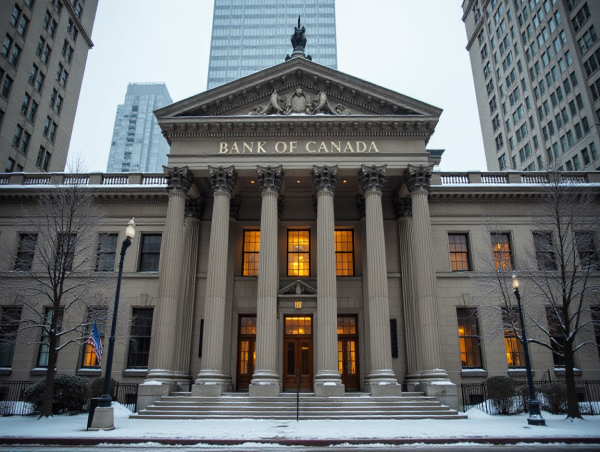Canada’s consumer price index (CPI) remained unchanged in May, offering some reassurance to Bank of Canada (BoC) policymakers concerned about persistent core inflation in recent months.
Data from Statistics Canada released on Tuesday showed that the CPI rose 1.7% year-over-year in May, the same pace as in April and in line with economists’ expectations.
On a month-over-month basis, the index rose 0.6%, slightly above economists’ projections.
The uptick was attributed to smaller-than-expected price drops in gasoline and cellular services.
Excluding energy, inflation slowed to 2.7% annually in May, compared to 2.9% in April.
Core inflation measures show signs of cooling
The BoC’s preferred measures of core inflation both eased to an annual pace of 3% in May, down from 3.1% in the previous month, aligning with median forecasts.
The three-month moving average of these core rates also declined, dropping to 3% from 3.4% in April.
Another key indicator, the proportion of CPI basket components rising at a rate of 3% or more, declined to 37.3% from 39.1%.
These trends could support the central bank’s cautious stance after it held its key interest rate at 2.75% during its past two meetings.
Policymakers, including Governor Tiff Macklem, have cited elevated core inflation as a reason to delay further rate cuts.
They are monitoring whether recent firmness in core measures is transitory or reflects more entrenched pressures.
Outlook and monetary policy path
The central bank continues to evaluate the broader economic landscape, including factors such as slowing domestic growth and global trade tensions, which could shape the future inflation trajectory.
While signs of economic softness have become more apparent in the second quarter, a severe downturn is not currently expected.
This gives policymakers time to assess whether further policy adjustments are necessary.
Economists remain divided on the BoC’s next steps. Some see the bank nearing the end of its rate-cutting cycle, while others anticipate at least one more rate reduction before the end of the year.
The next interest rate decision is scheduled for July 30, following the release of June’s inflation data.
Sector-level price trends
In May, lower price gains for rent and falling costs for travel-related services helped contain the headline inflation rate.
Rent prices rose 4.5% year-over-year, down from a 5.2% increase in April. Ontario led the slowdown, likely influenced by federal efforts to moderate immigration growth.
Statistics Canada also noted that ongoing trade tensions, including tariffs imposed by U.S. President Donald Trump, affected some price movements.
Regionally, six out of ten provinces experienced faster price growth in May compared to April.
In contrast, Quebec, Manitoba, and Saskatchewan saw slower inflation, while price growth in Nova Scotia remained steady.
Weaker demand for travel to the U.S. appeared to weigh on prices for travel tours and airfares, which declined 0.2% and 10.1% respectively, compared to a year earlier.
Conversely, new vehicle prices climbed more sharply, with a 4.9% increase in May versus 4.6% in April.
The rise was partly driven by higher costs for certain electric vehicles.
The post Canada inflation unchanged at 1.7% as core prices ease appeared first on Invezz





